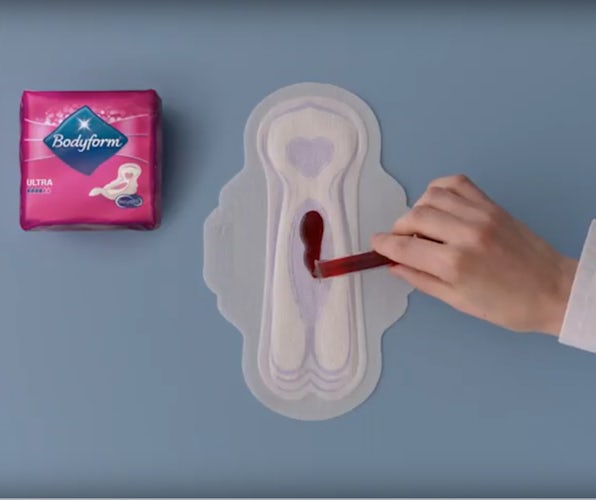Why Covid has made innovation ‘even more critical’
While on the surface it might appear they don’t have much in common, gourmet popcorn brand Joe & Seph’s and FMCG giant Essity both agree the pandemic has made innovation more important than ever.
 What innovation means to businesses has been completely flipped on its head by the pandemic. Overnight whole revenue streams ceased to exist, while new consumer needs raced to the top of the corporate agenda. Business models shifted, new products emerged and the brands prepared to invest in innovation started to pull away from their risk averse rivals.
What innovation means to businesses has been completely flipped on its head by the pandemic. Overnight whole revenue streams ceased to exist, while new consumer needs raced to the top of the corporate agenda. Business models shifted, new products emerged and the brands prepared to invest in innovation started to pull away from their risk averse rivals.
At gourmet popcorn brand Joe & Seph’s, innovation became even more crucial at the onset of Covid-19. Prior to the start of the crisis the company derived a “chunk” of its business from theatres, cinemas and airlines, which disappeared overnight. Furthermore, many of the pack sizes it sold had been developed with these markets in mind.
For a brand with product innovation at its heart, in the context of Covid the business model itself started to become a source of innovation.
“We had to do the famous ‘pivot’ and focus a lot more on DTC and online,” explained Adam Sopher, Joe & Seph’s co-founder and director, speaking yesterday (9 June) at the Festival of Marketing: Fast Forward.
“We already had that platform set up, but it was about developing it further and saying we could do popcorn subscriptions. We also had a big focus around Easter and creating a chocolate popcorn Easter egg with chocolate popcorn in the chocolate shell.”
Knowing the entertainment and travel market would eventually return, something Joe & Seph’s is seeing as restrictions lift, the team considered how it could use their development kitchens in the meantime to bring new products to life.
Typically, the kitchen teams spend two hours a week per person coming up with different products in order to keep new ideas flowing. Launched in May, Joe & Seph’s Bakewell Tart popcorn variety, for example, was a result of development carried out under lockdown.
We had to do the famous ‘pivot’ and focus a lot more on DTC and online.
Adam Sopher, Joe & Seph’s
Elsewhere, the sales team poured their ideas into how to ramp up the online business.
“We didn’t furlough anyone and actually the salespeople, who were historically managing theatres, cinemas and airlines, all became part of a big team focusing on how we can make online better,” said Sopher.
“We had this really interesting set of ideas from different perspectives on how we can do better online. With Covid, innovation became even more critical to what we do and really will continue to be a big part of what we do in the next few years.”
Covid-19 has also acted as an accelerator of innovation at global health and hygiene company Essity. Within the space of six weeks the business developed a face mask product under its Tempo tissue brand. At the same time, Essity’s Tena brand released the connected Tena SmartCare device to help people caring for relatives at home understand when they needed their incontinence product changing.
The company also started to sell washable underwear direct to consumers, which vice-president of brand building Gael de Talhouet describes as a “completely disruptive business model” for Essity. He believes the speed at which the team were able to bring these products to market is a sign of the company’s courage and belief it was acting in consumers’ best interests.
“We have used these difficult times to get even closer to our consumers. It was a great experience to be closer to their state of mind,” said de Talhouet.
“We all had in various stages to live through confinement, so on all our brands we embraced that to do our best to ease the life of people. It was an occasion to make the way we do marketing and the way we innovate even more human.”
Holistic innovation
Essity views innovation as a means of creating organic growth, spanning everything from new products and services to “taboo breaking communications”. De Talhouet pointed to the way the company’s feminine hygiene brand Bodyform (which is known as Libresse in other markets) was the first to show real period blood on screen and depict intimate female anatomy.
“Brand innovation is also services. We created a service call Tork Easy Cube that offers live data on cleaning, enabling users to know where and when to clean their bathrooms,” he explained.
“We also look at how to innovate with data and that’s part of our growth model. We were the first company three years ago to have a marketing campaign entirely managed by AI and that’s innovative at its core. And we created our digital hub, which is live data campaign optimisation.”
When Joe & Seph’s launched a decade ago its main aim was to create the best tasting gourmet popcorn. As a result innovation was geared towards making every element better, from the popping process to the caramel coating.
Then the focus shifted to pushing the boundaries with flavours, a mission which has seen the brand team up with Unilever on a Marmite variety and create the world’s first gin & tonic popcorn.
While these initial phases were very much product-led, as it started to grow the brand went through a phase of being buyer-led.
What we see in our process of strengthening our brand building is the will to take more risks.
Gael de Talhouet
“A supermarket or a buyer at a store would go, ‘I really want X and if you do it I’ll stock it’ and because you’re so eager to grow, and you never say no as a smaller business, you tend to do it, but often they’re not necessarily the right products. Often they are, but often they’re not and actually where we’ve got to now is where we should be – although we often deviate back to these other two steps – which is being much more consumer led,” said Sopher.
The innovation process has become even quicker now Joe & Seph’s has the whole team, from its production kitchens to its marketers, under one roof. An idea can go from an experiment in the development kitchen to tasting in the head office in the space of a day.
The process is certainly different in a corporate giant like Essity, although de Talhouet believes the differences are less down to the organisation’s size and more about the capital intensity involved.
“A lot of times when we create something radically new that means we need to build a new factory, or a new line, or buy a machine and that’s a completely different process,” he explained.
“When we launched our first toilet paper without a carton core, the idea sounds brilliant but you need to be able to manufacture that and how do you create that roll without the core? It’s much better for the environment and our consumers love it, but we need to be able to manufacture it. We need to be able to transport it.”
Risk is relative
Risk taking may have fallen out of favour in the context of the pandemic, but the cultures at both Joe & Seph’s and Essity remain far from risk averse.
When developing a new product, the popcorn brand will take a stand on a market in order to sell to the public, or buy a booth at a consumer show. The team has even been known to go into a supermarket and place the new product on the shelf to see if shoppers will put it in their trolley.
As these trials are small Joe & Seph’s can, on occasion, use other people’s machinery or rent machinery – for example to experiment with new packaging – rather than having to buy a new machine outright.
For de Talhouet, risk is all relative. Going to market in the space of six weeks with a range of face masks might be “fundamentally risk-taking”, but the importance of the project made any sense of risk disappear.
“What we see in our process of strengthening our brand building is the will to take more risks and in a funny way if you ask our top management, they would say: ‘We should take more risks’. Then if you ask anyone in our country, marketing, R&D or commercial teams, they would say: ‘It’d be great if top management would take more risks’. In fact, we’re talking about the same thing, it’s just we need to label it in a way we can act on it,” he said.
“The way we have encouraged that is to say first, ‘One size doesn’t fit all’ and that is pretty much the way we work at Essity. We consider we need to win locally with our local consumers and customers, and then our big innovation projects, which can be capital intensive and require a process, they need to be treated differently to a smaller one, or the strategic ones where time is of the essence.”
Is marketing entering an era of selective innovation?
Essity is currently working on a flexible validation process to empower employees to nurture an innovative mindset. De Talhouet used the example of the Tork Paper Circle initiative, which collects used paper towels from universities, offices and attractions, and recycles it into toilet paper. The idea came from the team sitting down with customers and searching for solutions.
“That’s how we look at risk taking. It’s mostly jumping on opportunities, starting it small scale and making sure that we work together with our customers. That’s how we embrace risk taking and use our culture and people to make it happen,” he added.
What a smaller business can learn from a corporate giant like Essity is to build on their strengths and “don’t try to do anything a big company would do”, de Talhouet advised. He argued startups should focus on leveraging their core point of differentiation and dialling up the storytelling element.
The advice from Joe & Seph’s is that collaboration is king. Sopher believes large corporates should collaborate more with smaller businesses, as Joe & Seph’s has done with the likes of BrewDog, creating a range of popcorn paired to its beers.
The gourmet popcorn brand has previously joined forces with 20th Century Fox on a product to promote the release of The Greatest Showman and to mark this month’s Euro 2020 tournament has teamed up with Budweiser to develop popcorn coated in beer.
“There’s lots of cool things you can do that while you might lack the set up to do it internally as a bigger company – the team, the speed or the factory – there is a smaller business out there who would be very keen to help on that journey. The combined effort often produces a great result,” Sopher added.







